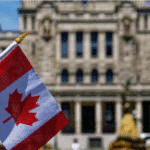What’s better than tax benefits? More tax benefits. With the recently-introduced registered account, the first home savings account (FHSA), you may save and invest up to $40,000 for retirement without impacting your registered retirement savings plan (RRSP) deduction limit.
Here’s how. Starting in 2023, you can open an FHSA to save for your first home. Contributions to your first home savings accounts qualify for tax deductions, reducing your taxable income the year you file your income and benefit return. There is no minimum number of days your contributions must stay in the FHSA to claim a tax deduction in the tax year.
If you withdraw from a first home savings account without qualifying as a first-home buyer or use withdrawals for purposes other than purchasing your first home, you will pay tax on the withdrawn funds to the Canada Revenue Agency (CRA).
However, as of 2024, you can transfer money from your first home savings account to a registered retirement savings plan (RRSP) without paying taxes. You do not need extra RRSP contribution room to make this transfer. Also, moving money from an FHSA to an RRSP does not affect your RRSP or FHSA contribution limit. To transfer your FHSA account to a registered retirement savings plan or a registered retirement income fund (RRIF) without paying taxes, you may need to fill and submit Form RC721, Transfer from your FHSA to your FHSA, RRSP or RRIF.
Your financial institution must carry out a direct transfer between your FHSA and RRSP to avoid taxes. If you do the transfer yourself by withdrawing from the FHSA and contributing to your RRSP, your withdrawals will be taxed, and the contribution amount will reduce your RRSP contribution room.
When planning your taxes and retirement savings, it is important to note that transfers from your registered retirement savings plan to your first home savings account will not qualify as tax deductions. Also, your FHSA must be closed 15 years after opening the account or the year you turn 71, whichever is earlier. This is known as the maximum participation period. Make plans to transfer your FHSA assets before your maximum participation period ends to avoid taxes.
If you decide to use the FHSA to save and invest funds with the intention to convert to an RRSP, you must remember that the taxes on your contributions and investment income are tax-deferred. This simply means you will still get to pay taxes later, hopefully at a lower rate in retirement. Similar to the RRSP rules, the CRA will tax your withdrawals from FHSA funds transferred to an RRSP.
Disclaimer: This article is for general information purposes only, and is not legal, financial, or tax planning advice. Everyone’s situation is unique, and this article cannot apply to every person. The reader should not take any action, or refrain from taking any action, as a result of this article without first obtaining legal or professional advice.











